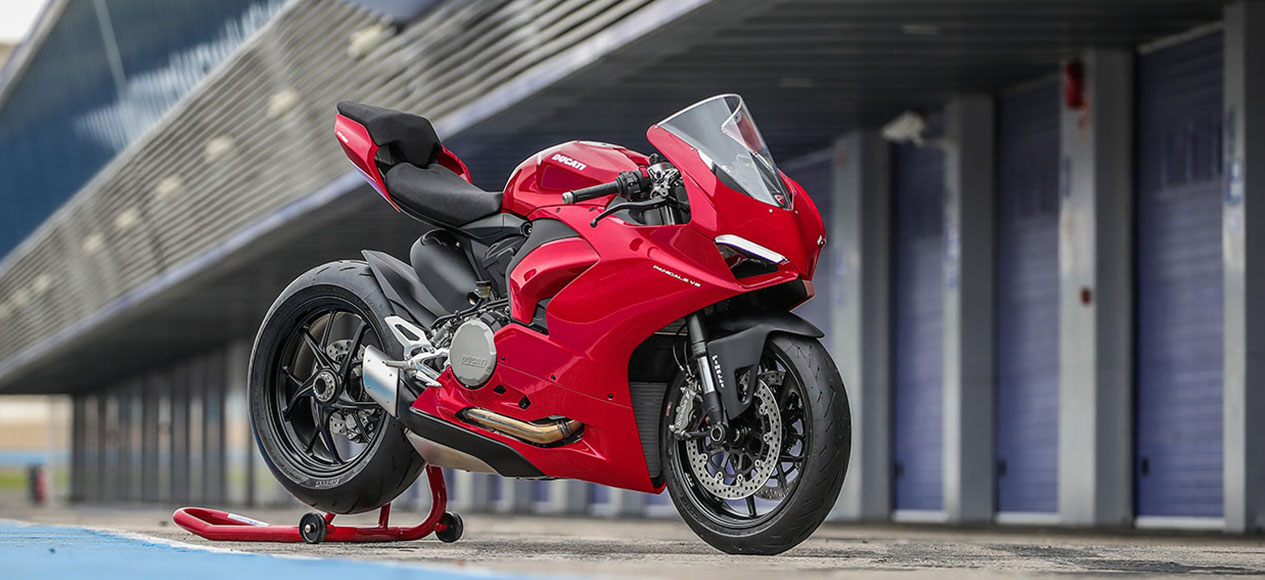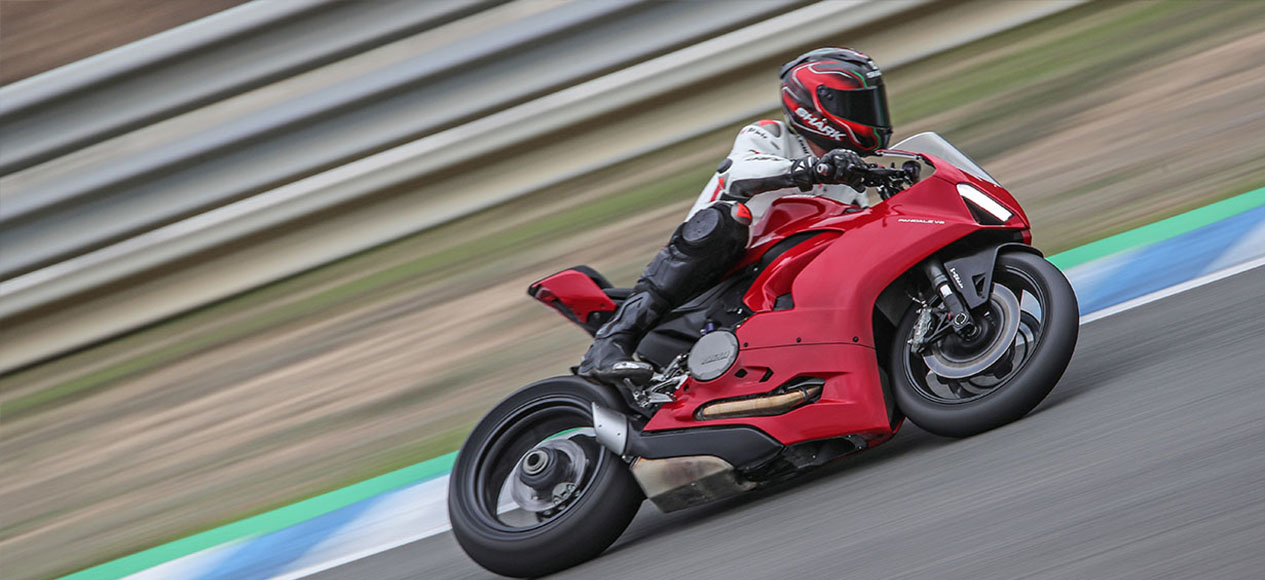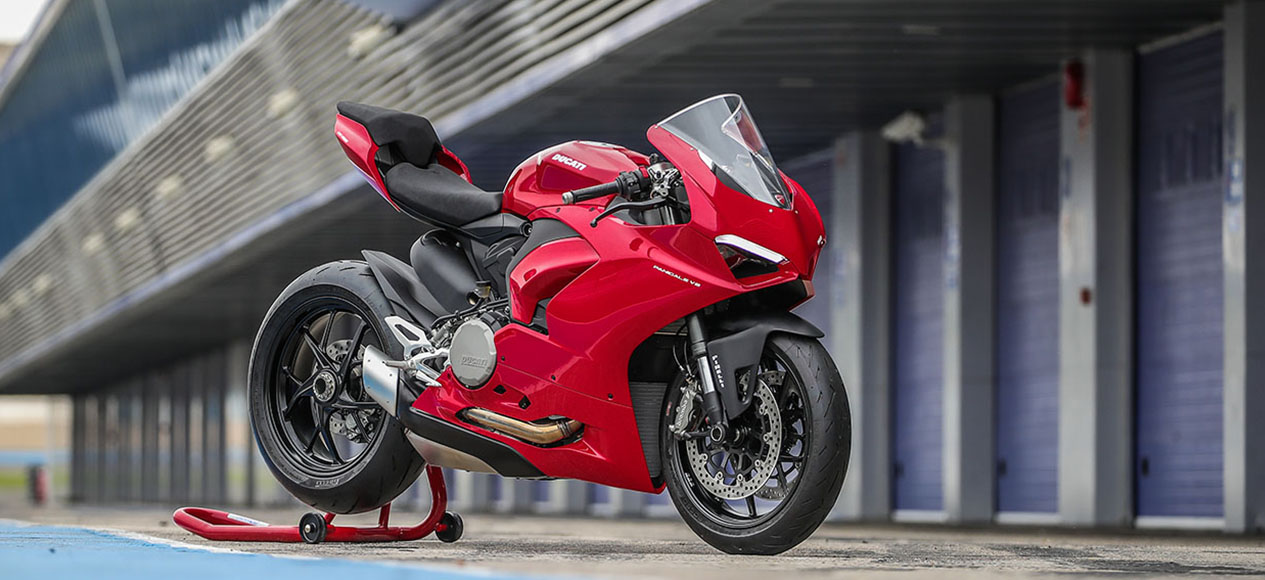The phrase “rider-friendly” is probably not the first you’d expect to associate with a bright red, 150bhp-plus Ducati Panigale. But after a day at the Jerez grand prix circuit aboard the Panigale V2, it’s definitely one that comes to mind.
This replacement for the Panigale 959 is stylish, sweet-handling and fast, too – make no mistake about that. But what really stands out about the revamped flagship of Bologna’s sporty V-twin family is the ease with which most riders could simply climb aboard and attempt to get the best from it.
Ducati’s so-called “super-mid” has always been intended as a more accessible alternative to the open-class models; easier to get on with, and as at home on both road and track. The Panigale V2 has a new name and a new look that more closely resembles the Panigale V4, but its ethos and its 955cc, V-twin desmo engine are unchanged.
The fresh look comes from a new twin-layer fairing, and a new exhaust system whose short single silencer replaces the 959’s unpopular twin-pipe system. The fairing ducts air more efficiently to new, more free-flowing injectors. That boosts power output by 5bhp, although the claimed maximum of 153bhp is slightly down on the 959’s due to Ducati’s revised way of measuring the output.

There’s a new, 4.3in, TFT instrument panel and electronics are upgraded to Panigale V4 spec. That means a new quickshifter that works in both directions, rather than just on up changes; plus the latest versions of traction control (including MotoGP-inspired predictive function, like that of the Panigale V4R), anti-wheelie, engine braking and cornering ABS.
The aluminium monocoque frame is retained but holds a new single-sided swing arm of unchanged length. The Showa BPF front forks also stay, just getting softer standard settings, but the rear Sachs unit is slightly longer, which sharpens steering geometry and puts a fraction more weight (52 instead of 51 per cent) over the front wheel.
It all adds up to a Panigale that retains all the good bits of the 959, and is even more controllable and easy to ride. And it’s still every bit a fast red Ducati, charging to an indicated 150mph on the Jerez back straight with a gear and another 10mph or more to go, and pulling superbly cleanly and crisply in both Race mode and the slightly softer Sport setting. It also rumbled pleasantly through the stubby silencer that helps get the bike through Euro5.
The two-way quickshifter is a useful improvement, changing reliably and making life simpler when braking into turns. The V2’s unchanged Brembo M4.32 Monobloc calipers gave plenty of stopping power, but without the fierce bite of the V4’s Stylema units. When braking hard it was good to be able to keep my body weight over the rear wheel by moving back in the seat, which is 20mm longer than the 959’s.

Handling matched the rider-friendly theme, even more so than the 959’s because the longer shock and resultant steeper steering geometry made the V2 slightly more responsive. It’s only the sort of change that adding a touch of shock preload made to the old model. But there was no doubting the Panigale’s ease of steering and stability through the smooth Jerez curves.
The Ducati’s cutting-edge electronic systems helped make it a very easy bike to ride fast, too, without remotely intruding into the ride. And the sticky Pirelli Supercorsa SC tyres were equally impressive, though the bike will come with Rosso Corsa II rubber that is more suitable for a typical mix of road and track use.
Disappointingly, rain from midday at Jerez meant the Supercorsas had to be swapped for Pirelli’s heavily treaded racing rain tyres for the afternoon sessions. But the bike was still fun and respectably quick in the slippery conditions, which highlighted its precision of throttle response, steering input and braking performance, as well as its high-level electronic safety systems.
At £14,995, the Panigale V2 costs over £800 more than the old 959, but it’s still £5000 less expensive than the base model V4. Perhaps more importantly, it’s infinitely more rider-friendly, and in some respects more rewarding to ride. If you’re captivated by the thought of a bright red Panigale for road and track, and can live without the V4’s mind-altering adrenalin kick, this thoughtfully revised V-twin alternative makes plenty of sense.
| Ducati Panigale V2 Specification | |
| Engine type | Liquid-cooled 90-degree V-twin |
| Valve arrangement | DOHC desmodromic, eight valves |
| Displacement | 955cc |
| Bore x stroke | 100 x 60.8mm |
| Compression ratio | 12.5:1 |
| Carburation | Electronic injection system, elliptical throttle bodies |
| Maximum power | 153bhp (114kW) @ 10,750rpm |
| Maximum torque | 104N.m @ 9000rpm |
| Clutch | Wet multiplate |
| Transmission | 6-speed |
| Front suspension | 43mm Showa BPF usd, 120mm travel, adjustments for preload, compression and rebound damping |
| Rear suspension | One Sachs shock, 130mm wheel travel, adjustments for preload, compression and rebound damping |
| Front brake | 2, four-piston Brembo Monobloc M4-32 radial calipers, 320mm discs |
| Rear brake | Twin-piston Brembo caliper, 245mm disc |
| Front wheel | 3.50 x 17in; cast aluminium |
| Rear wheel | 5.50 x 17in; cast aluminium |
| Front tyre | 120/70 x 17in Pirelli Diablo Rosso Corsa II |
| Rear tyre | 180/60 x 17in Pirelli Diablo Rosso Corsa II |
| Rake/trail | 24 degrees/94mm |
| Wheelbase | 1436mm |
| Seat height | 840mm |
| Fuel capacity | 17 litres |
| Weight | 176kg dry, 200kg wet |



